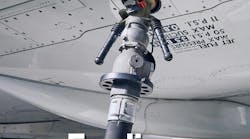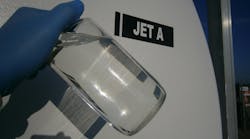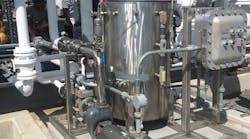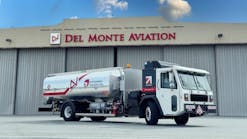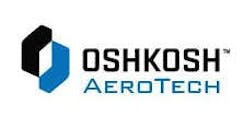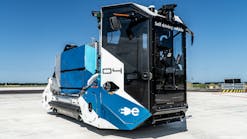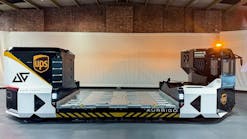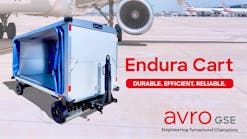A colorimetric membrane filter test involves the filtration of a known volume of Jet Fuel through a standardized filter membrane material manufactured by the Millipore Sigma Corporation to determine if particulates, or color bodies, are present in the fuel.
The test is listed in many different documents such as ATA-103, Canadian Standard B836-22, DOD fuel contracts and Fuel Supplier Agreements. The test offers a confirmation that fuel being delivered downstream of a filter system is free of contaminates, thus verifying that the Jet Fuel filter itself is functioning properly.
Many refer to this field test as a “diagnostic test for the efficacy of the Jet Fuel filter.” Should this test be performed upstream of a filter vessel, and again downstream, the test result with the downstream pad should be as good (if not better) than the results of the upstream pad.
However, in training classes around the world, when those that regularly perform this test are asked, “is there a pass/fail limit for this test?” more often than not, the question is met with puzzled expressions.
How it Works
The vast majority of filters in Jet Fuel service, filter product down to 1 micron (remember that we can typically see to about 40 micron and a red blood cell is only 8 micron).
The filtration rating of the Millipore filter membrane material is 0.8 μm, which means that the test results will be reported in microscopic content.
First a 37 mm supporting Back-up Pad is installed (round edge up) into the recessed cut out on the outbound side of the plastic monitor capsule (the half with the “spyder web” design and corresponding recess).
Then the very fine Millipore filter membrane is placed atop the support pad using the lockable tweezers and the top half of the plastic monitor capsule (labeled INLET) is securely affixed.
As a note, the blue wax paper found in the package of Millipore filter membranes is designed as a divider between the white filter membrane elements to keep them clean, separated and should not be used to perform the test and may be disposed.
The test must be performed under flow conditions, and that flow must be at 50 percent or greater than the rated flow of the vessel (filter vessels should be placarded with the manufacturer’s Rated Flow capacity).
Once the plastic monitor capsule has been assembled and installed into the Mini Monitor kit and hand-tighten, connect the bypass hose to the capsule monitor holder and the entire rig can be connected to the inlet, or outlet actuator dry-break quick disconnect coupler.
If the assembled kit leaks, inspect the O-rings inside the capsule monitor holder, as they may need to be replaced. The dry-break quick disconnect coupler should have a direction of flow arrow stamped on it confirming that it is installed properly with the direction of flow of the fuel.
Typically, the downstream sample is performed first as our primary concern is ensuring that we are delivering clean fuel to the aircraft, the upstream test may be performed if the downstream test fails. For this reason, the test is considered a “diagnostic” filter evaluation in identifying the filter is functioning correctly, or the cause of a contamination issue.
As a rule, the test should performed in the exact same way, at the same location, under the same flow conditions, flushing and sampling the same volume amounts. This is to ensure consistency to benchmark results over a period of time, as well as set trend expectations that if there is an abnormality, it would then be obvious.
There are those dedicated to the finest quality control procedures that perform this test during receipt of product into fixed facility storage tanks. In this case, it is recommended that the sample be taken upstream of filtration to determine any possible particulate contamination in the fuel being delivered.
The Test
Filters are generators of static electricity, and the “Millipore Test,” as commonly referred to, is a Super Static Generator. The test kit must be bonded at both ends; one clamped to the plumbing being tested and the other to the bonded bucket in which the flush and test fuel will be placed.
Begin with the Mini-Monitor Kit control in the ‘stop’ position and start fuel flow through the filter vessel. Once flow is established, move the lever to the ‘flush’ position. Flush a known volume of fuel (recommend 1 gallon/5 liters), bypassing the membrane to ensure the test connections and lines are free of contamination which may alter the test results.
Once this known volume of fuel has flushed the system and test probe in the product line, move the lever to the ‘test’ position. In the ‘test’ mode, the fuel is routed through the capsule with the membrane and back-up pad.
Again, flow a known volume through the capsule (recommend 1 gallon/5 liters). If those parameters are not followed consistently, there is no way to benchmark results in order to evaluate trends or interpret contamination levels.
It is critically important to remember that the Mini-Monitor test rig should be turned to ‘stop’ before the fuel flow through the filter is stopped.
The Results
Once the kit is removed from the quick disconnect coupler, drain the fuel from the kit into the bonded bucket. Once the fuel has been drained, the bypass line may be disconnected, and the Mini-Monitor kit disassembled.
Remove the capsule from the kit and remove the fuel remaining in the capsule using the metal syringe, gently draw the fuel from the outlet side of the capsule. Discharge the fuel drawn from the capsule into the bonded bucket.
Split the two halves of the capsule, using the handle of the kit in the opening of the outlet side of the capsule, lift the back-up pad and expose the membrane. Remove the membrane using the supplied lockable tweezers and place it on a clean, dry paper towel.
Remembering that wet membranes are almost always darker than dry membranes, compare the tested membrane against the ASTM Color Standards Color booklet or Color and Particle Assessment Chart. When using the ASTM Color Standards booklet (a little secret is that if you have to flip to the second page), it is considered a failed result, and investigation must ensue to determine the cause of the contamination.
The ATA-103 states that the Acceptable color ratings are:
Any Scale (A, B, or G)
- Maximum Rating – Less than 3 Dry
- Maximum Rating – Less than 4 Wet
Whether rating the membrane wet or dry, a membrane with visible particles is cause for concern and requires prompt investigation to determine where the solids are being introduced.
Questions
Sometimes questions arise about the fine particulate contamination, or the inherent color of the fuel, which is reasonable.
Should this occur, once the back-up pad is installed, place two membranes in the cassette and perform the test again. If the results are from the color bodies of the fuel, both membranes will reflect the same color.
If the contamination in the fuel is filterable, then the top membrane will be darker than the second membrane. If there is a desire to determine exactly how much filterable material there is in the fuel, a set of Matched Weight membranes may be used, and the difference determined to estimate the exact amount of filterable contaminates that exist.
It's good to remember that although it is a required test by many standards, the test is not to be used as a basis for rejection of product, as the test method produces results that are not quantitative. However, the test is extremely useful in monitoring the cleanliness of our Jet Fuel and evaluating the effectiveness of our filter systems.


